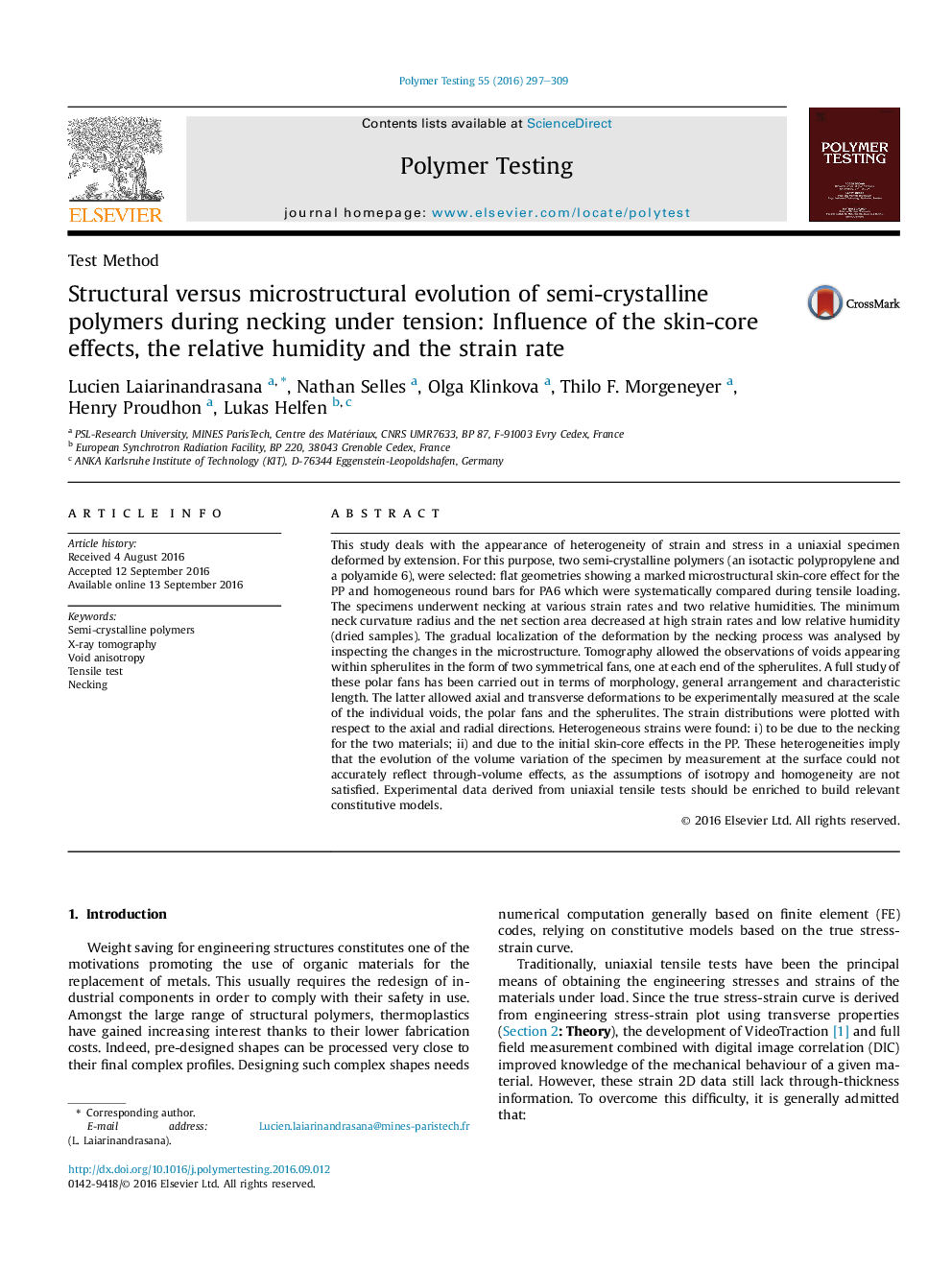| Article ID | Journal | Published Year | Pages | File Type |
|---|---|---|---|---|
| 5205816 | Polymer Testing | 2016 | 13 Pages |
Abstract
This study deals with the appearance of heterogeneity of strain and stress in a uniaxial specimen deformed by extension. For this purpose, two semi-crystalline polymers (an isotactic polypropylene and a polyamide 6), were selected: flat geometries showing a marked microstructural skin-core effect for the PP and homogeneous round bars for PA6 which were systematically compared during tensile loading. The specimens underwent necking at various strain rates and two relative humidities. The minimum neck curvature radius and the net section area decreased at high strain rates and low relative humidity (dried samples). The gradual localization of the deformation by the necking process was analysed by inspecting the changes in the microstructure. Tomography allowed the observations of voids appearing within spherulites in the form of two symmetrical fans, one at each end of the spherulites. A full study of these polar fans has been carried out in terms of morphology, general arrangement and characteristic length. The latter allowed axial and transverse deformations to be experimentally measured at the scale of the individual voids, the polar fans and the spherulites. The strain distributions were plotted with respect to the axial and radial directions. Heterogeneous strains were found: i) to be due to the necking for the two materials; ii) and due to the initial skin-core effects in the PP. These heterogeneities imply that the evolution of the volume variation of the specimen by measurement at the surface could not accurately reflect through-volume effects, as the assumptions of isotropy and homogeneity are not satisfied. Experimental data derived from uniaxial tensile tests should be enriched to build relevant constitutive models.
Related Topics
Physical Sciences and Engineering
Chemistry
Organic Chemistry
Authors
Lucien Laiarinandrasana, Nathan Selles, Olga Klinkova, Thilo F. Morgeneyer, Henry Proudhon, Lukas Helfen,
